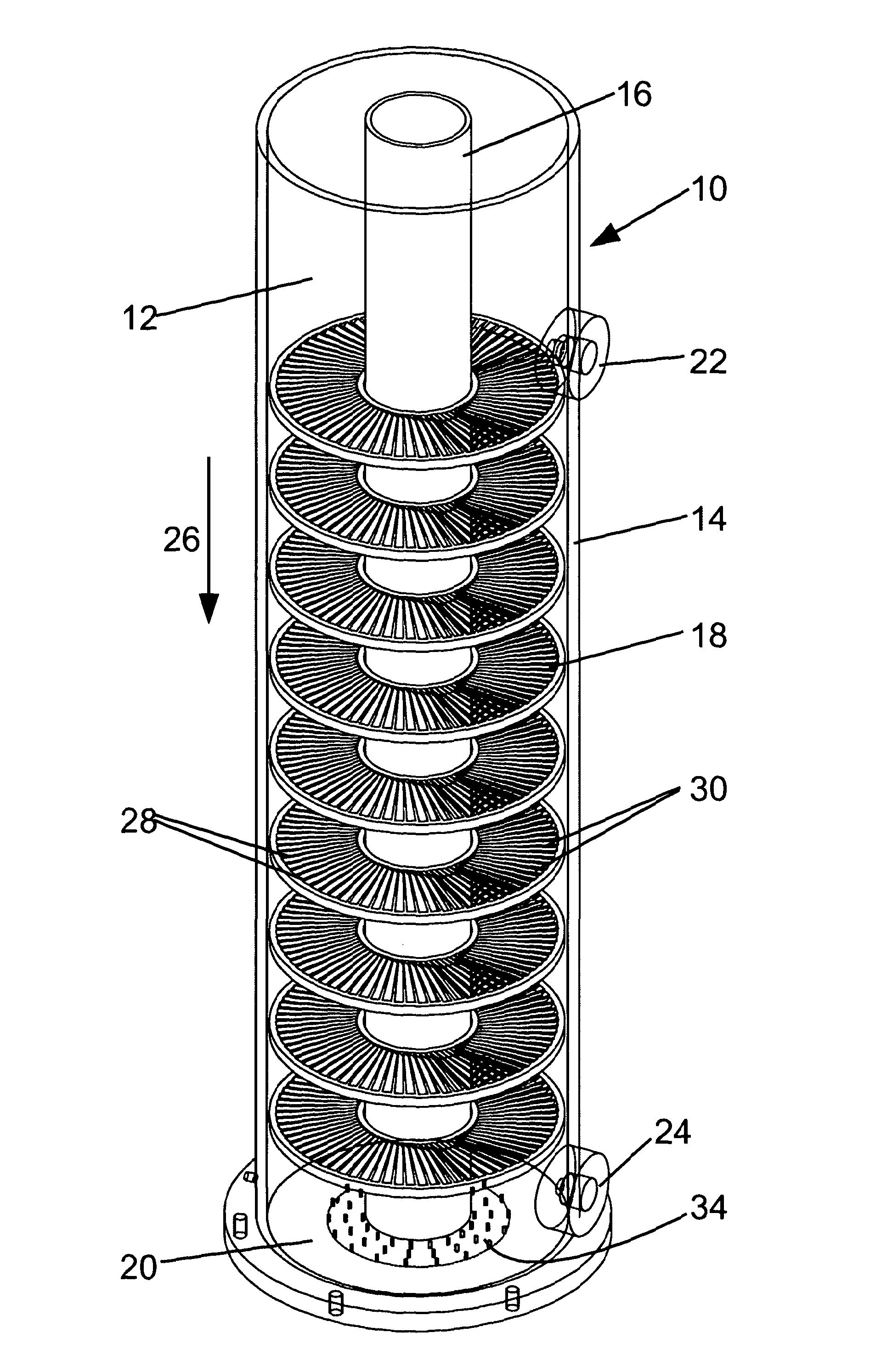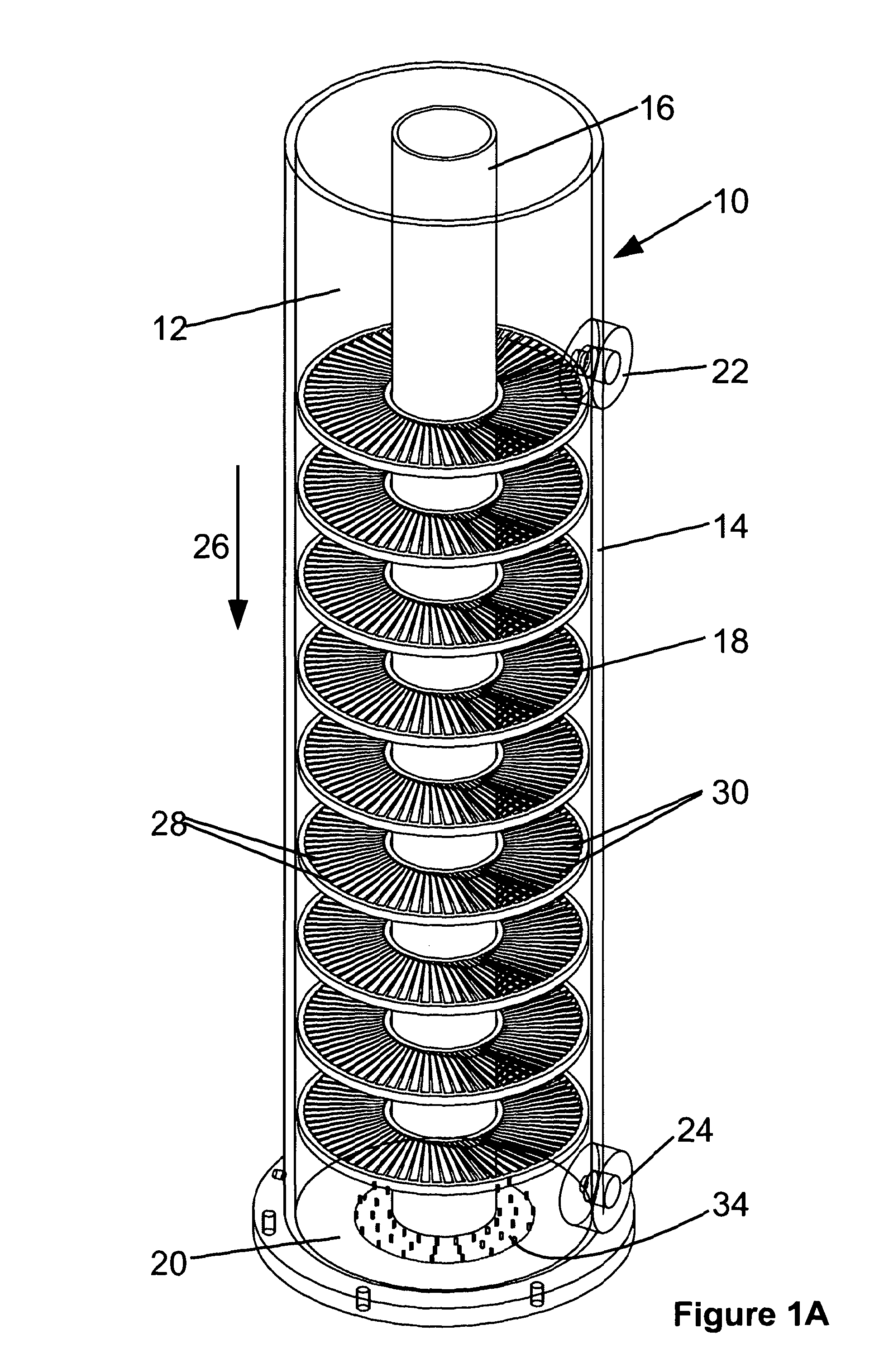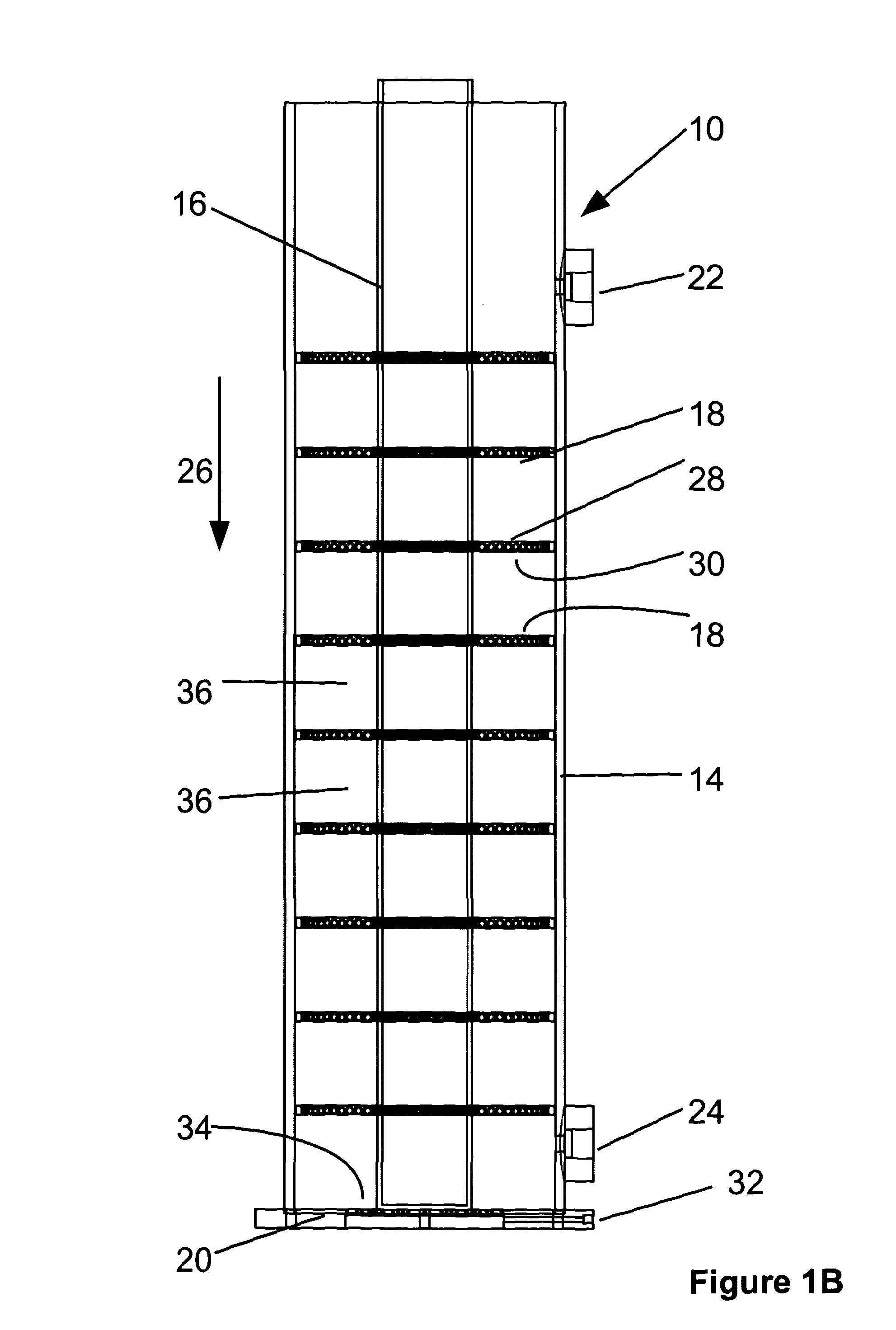Photocatalytic reactor and methods of use
a photocatalytic reactor and photocatalytic technology, applied in the direction of gravity filters, water treatment compounds, specific water treatment objectives, etc., can solve the problems of limiting the rate of catalytic reaction, affecting the efficiency of photocatalytic reaction, so as to achieve the effect of increasing the amount of gas
- Summary
- Abstract
- Description
- Claims
- Application Information
AI Technical Summary
Benefits of technology
Problems solved by technology
Method used
Image
Examples
Embodiment Construction
[0109]Referring firstly to FIGS. 1A to 1C, there is shown a reactor 10 in accordance with an embodiment of the invention shown in perspective view, in longitudinal section, and in cross section respectively. The reactor 10 is configured as a photocatalytic reactor and comprises a flow-through reaction chamber 12 defined by a wall 14 and a base plate 20.
[0110]Reactor 10 is well suited to for example the treatment of contaminated wastewater from a variety of industrial processes. Contaminated wastewater from these processes often contains hydrocarbons including glycols, surfactants and other soluble compounds. Due to their solubility these compounds are difficult to remove by traditional treatment methods. It is known that these compounds are amenable to destruction using photocatalytic systems however the reactions are inefficient and are not easily scaled-up to plant size. This embodiment is described in context of wastewater, although it has application to other liquid treatments a...
PUM
| Property | Measurement | Unit |
|---|---|---|
| Flow rate | aaaaa | aaaaa |
| Length | aaaaa | aaaaa |
Abstract
Description
Claims
Application Information
 Login to View More
Login to View More - R&D
- Intellectual Property
- Life Sciences
- Materials
- Tech Scout
- Unparalleled Data Quality
- Higher Quality Content
- 60% Fewer Hallucinations
Browse by: Latest US Patents, China's latest patents, Technical Efficacy Thesaurus, Application Domain, Technology Topic, Popular Technical Reports.
© 2025 PatSnap. All rights reserved.Legal|Privacy policy|Modern Slavery Act Transparency Statement|Sitemap|About US| Contact US: help@patsnap.com



